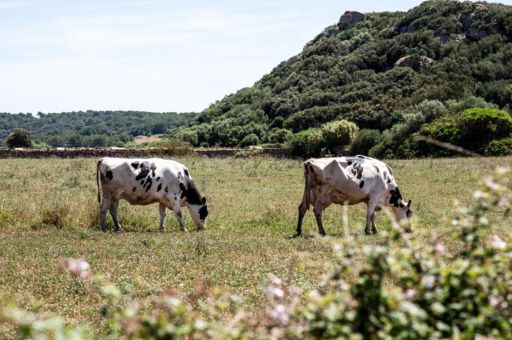Menorca with an increase of 4.10% over last year consolidates the recovery of milk production potential
The Department of Agriculture, Fisheries and Natural Environment, through the Directorate General of Agriculture, Livestock and Rural Development, collects data from the Unified Information System of the dairy sector (INFOLAC) that show that the archipelago closed 2024 with a production of 57,102,752, a figure that represents a return to pre-crisis production in 2021. Specifically, there was an increase in production of 1,000,000 litres of milk last year compared to 2023. By islands, Menorca saw the biggest increase with a 4.10% rise, with a total production of 47,376,568 litres. On Ibiza, there was a reduction of 1.31%. As for Mallorca, production fell by 10%, compared to 2023, on the other hand increased by 107.7% milk for direct sale to dairy farms for processing.
TDB keeps you informed. Follow us on: Facebook, Twitter and Instagram
Milk production increased last year in the Balearic Islands by almost 1,000,000 litres compared to 2023
The councillor for Agriculture, Fisheries and the Natural Environment, Joan Simonet, explains that ‘since 2022 we have seen that there has been more milk production with a smaller number of cows. This indicates greater productivity per animal, and therefore greater efficiency. The reflection that we are passing on to the sector is the need for the increase in production in Menorca to go hand in hand with the increase in the volume of cheese produced and marketed on the island. In the milk sector, imbalances between supply and demand have very direct effects on the price of both the raw material and the processed product’.
In the specific case of milk declarations for direct sale, this commercialisation has a very high weight in Menorca’s production, since a total of 53 farmers declare this activity. Last year it accounted for 42.64% of total production.
Farms and livestock census
In terms of milk marketing farms, last year there were 127 on all the islands. Of these, the majority 114 are in Menorca, another 11 in Mallorca and 2 in Ibiza. On the other hand, the number of cows over 24 months old has fallen by 11%, mainly in Mallorca. Even so, the director general of Agriculture, Livestock and Rural Development, Fernando Fernández, assures that ‘not all the difference in the number of animals is due to a real fall in the census, but also because the way they are counted has been adjusted. Despite the drop in producing females over 24 months, the figure for replacement calves over 15 months and calves up to 15 months is high. This indicates that the potential for recovery of part of the dairy herd exists, especially if we think that this year is going well from the meteorological point of view and this may encourage farmers to leave more females for production.
Fernández has once again appealed to the price of milk: ‘The sector knows that since I have been director general I have paid special attention to the price of milk.
On this point, it must be said that the average price at which farmers have been paid for milk in the archipelago during 2024 fell again by 0.025 euros per litre. Last year closed with an average milk price in the Balearics of 0.466 euros per litre, while the national average was 0.499. This 0.033 euro difference remains constant and this difference should not exist under the island’s production conditions. But also, once again, during the year 2024, the average price of milk paid to farmers in Menorca was 0.458 while the average price in Mallorca was 0.522 .Even with these figures, Fernández stressed that ‘the total value of milk production in 2024 reached 29.4 million euros’.
On the other hand, the marketing of Mahón-Menorca PDO cheese has maintained the trend of the last 10 years and increased with respect to 2023. Specifically by 8%, with a total of 3,700 tonnes. It was in 2022 when the increase in sales surpassed the 3,000-tonne mark.
